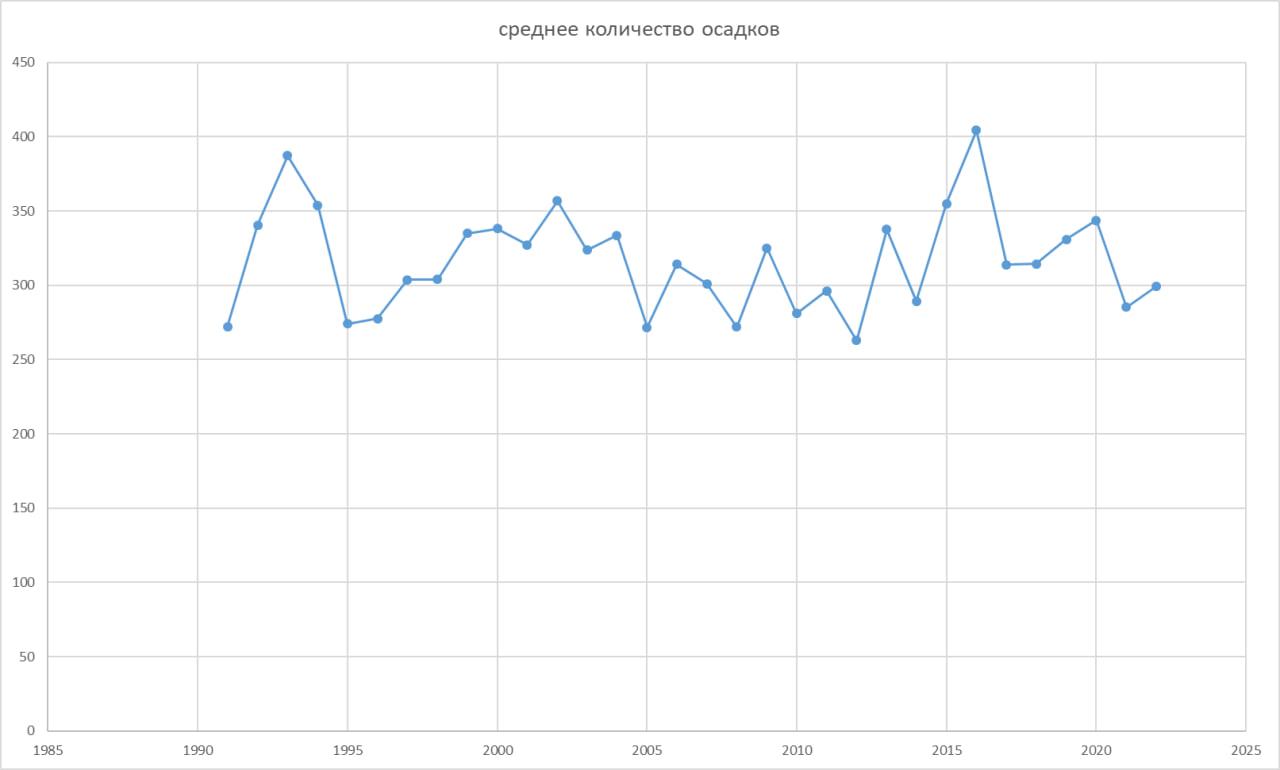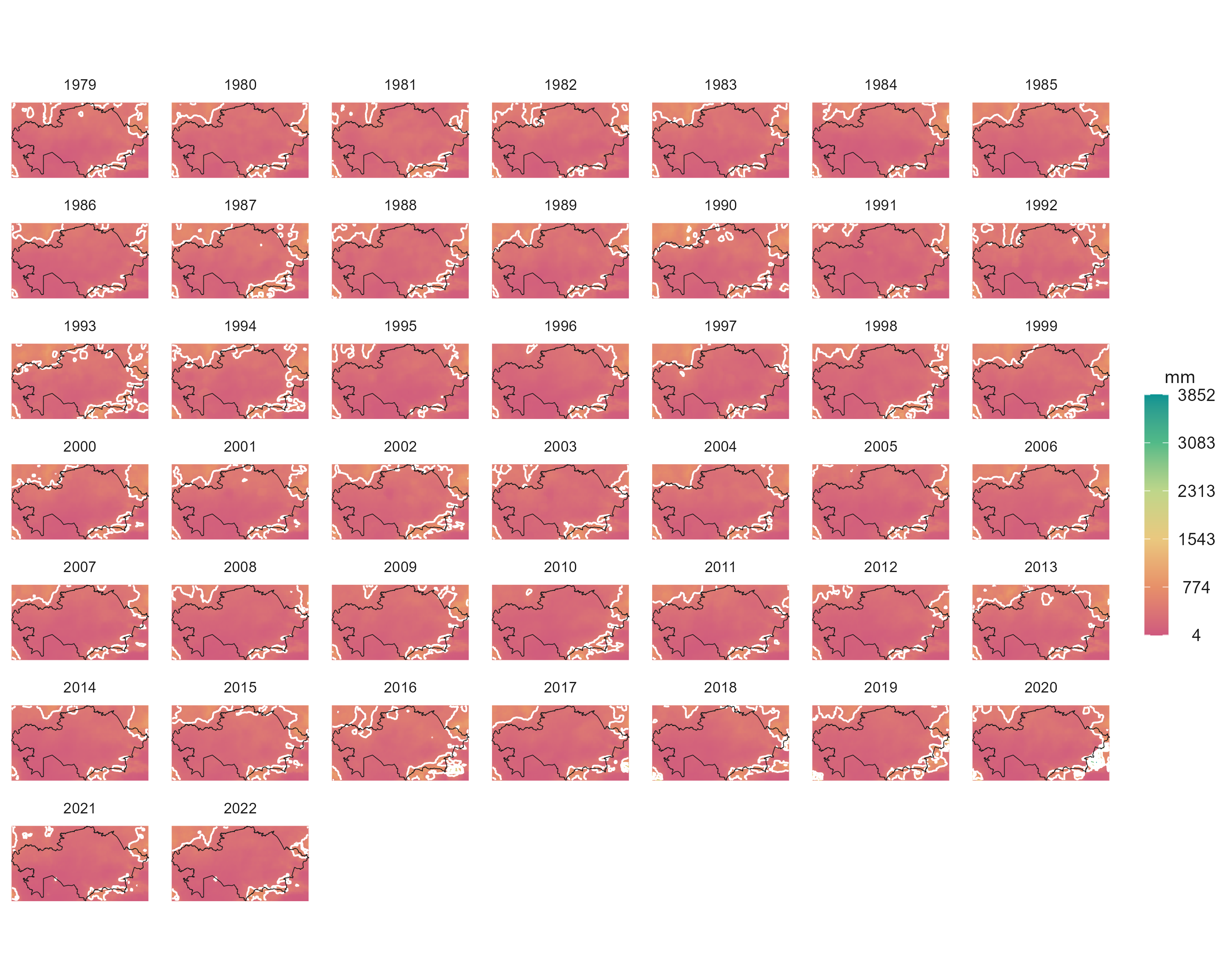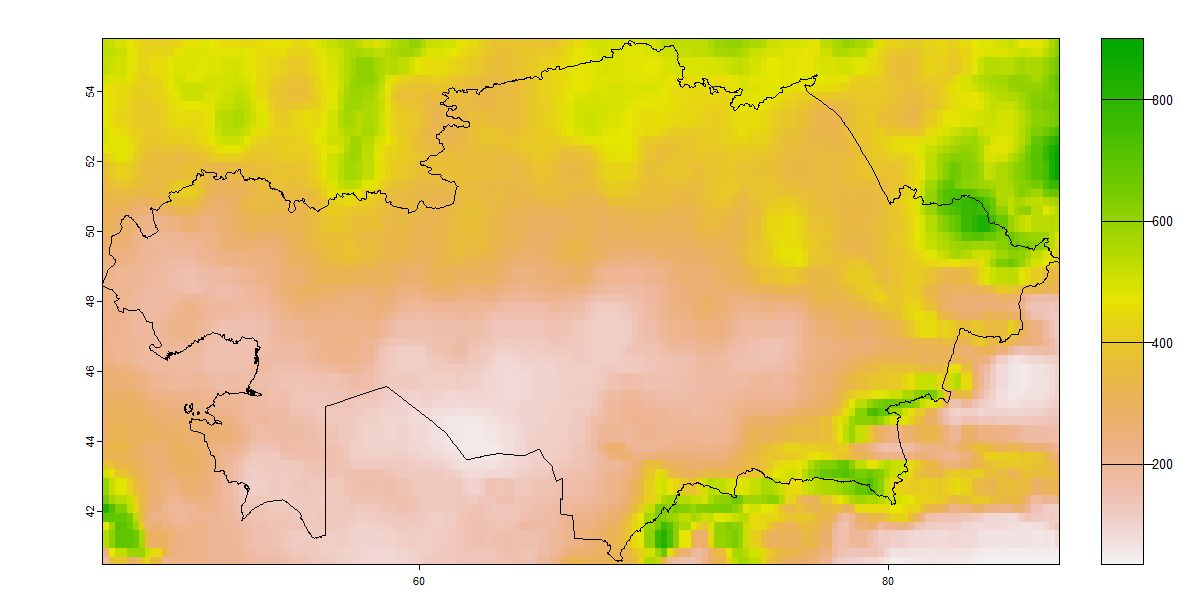In this project, I visualized the precipitation distribution across Kazakhstan. The map was created using the R programming language with libraries such as recipe, iscar, terra, tidyverse, rayshader, sf, and classInt.
Methods and Tools
The following tools and libraries were used to create this visualization:
- recipe: A package for preprocessing data in R.
- iscar: A package used for statistical analysis and plotting.
- terra: A library for spatial data analysis.
- tidyverse: A collection of packages for data manipulation and visualization.
- rayshader: A package for creating 2D and 3D maps.
- sf: A package for handling spatial vector data.
- classInt: A package for choosing univariate class intervals.
Visualization Description
The map graphically represents the distribution of precipitation across Kazakhstan. The northeastern and southeastern regions receive more precipitation, which is depicted in green, indicating a more humid climate typical for mountainous and foothill areas like Altai, Alatau, and Tien Shan. In contrast, the central and southern regions receive less precipitation, depicted in pink and beige, representing the arid climate typical of steppes and deserts, such as Mangystau and Kyzylorda.

Figure 1: Average annual precipitation in Kazakhstan over the years

Figure 2: Precipitation distribution across Kazakhstan from 1979 to 2022
Conclusions
Analyzing the map allows us to draw several key conclusions:
1. The northeastern and southeastern regions of Kazakhstan receive significantly more precipitation, contributing to a more humid climate.
2. The central and southern regions of the country receive less precipitation, creating arid conditions typical of steppes and deserts.
3. Low precipitation levels are observed in the western part of Kazakhstan, especially closer to the Caspian Sea, which influences the region's dry climate.
Code
The entire project code is available on GitHub.

